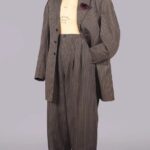From Cartier to Costume, The Unmistakable Beauty of Fruit Salad Jewelry
There are lots of nicknames costume jewelry collectors have given their favorite styles over the years. None are so fun, perhaps, as “Fruit Salad.” This term pertains to adornment made by one of the giants in the costume jewelry business to imitate a particular type of Art Deco era fine jewelry.





